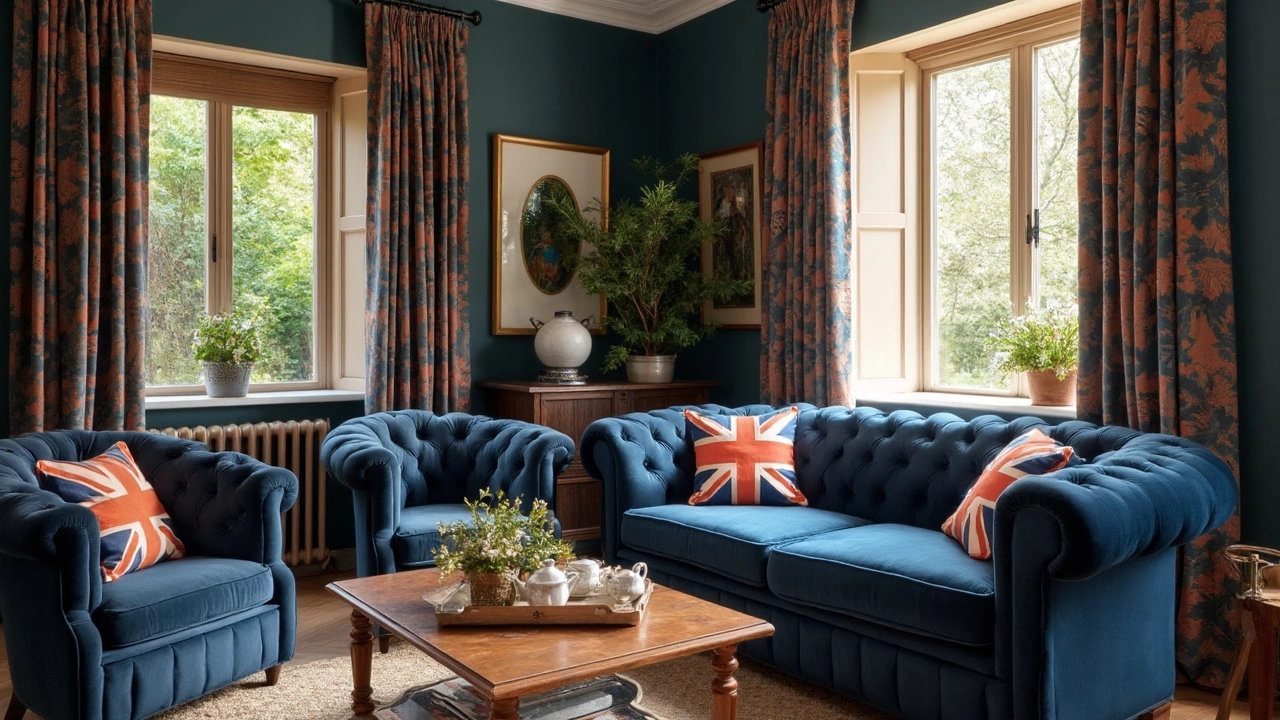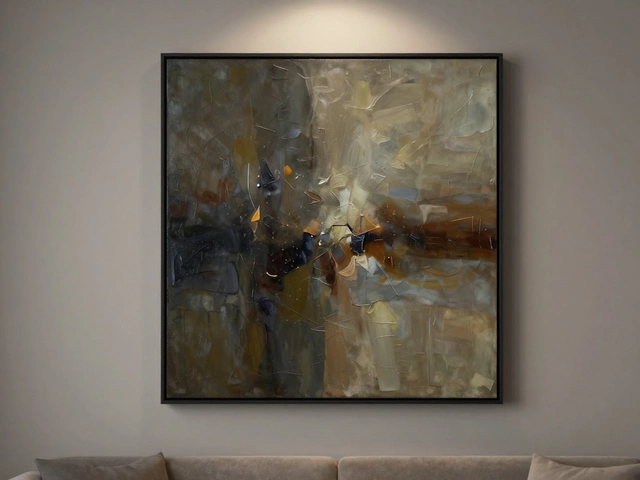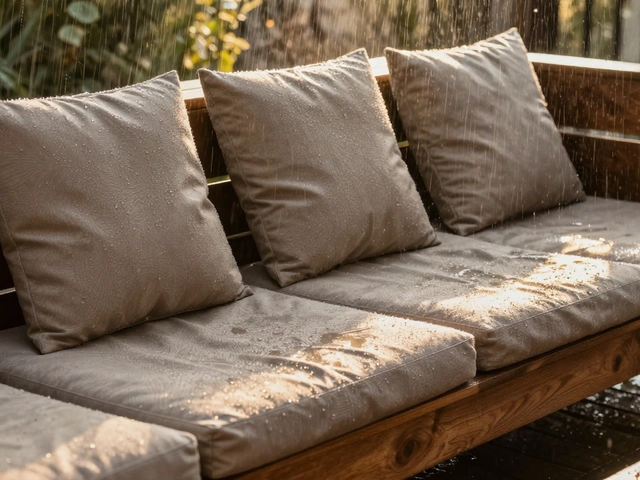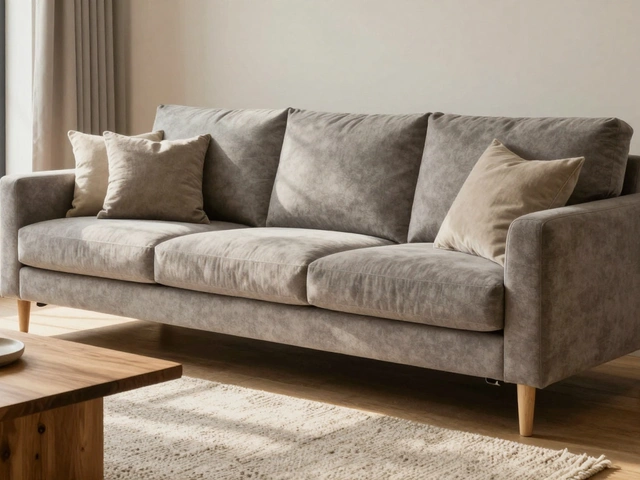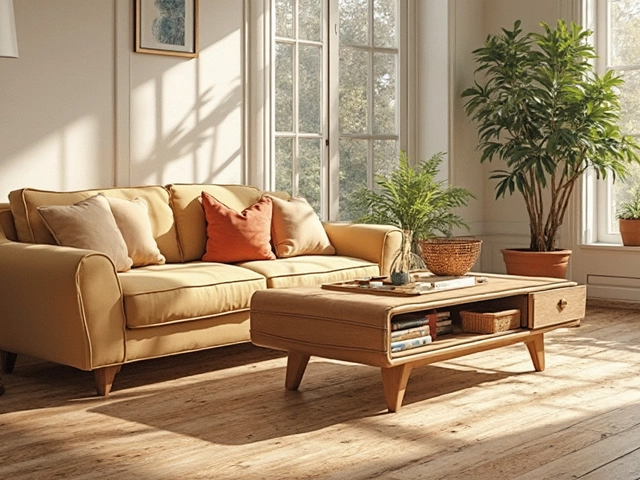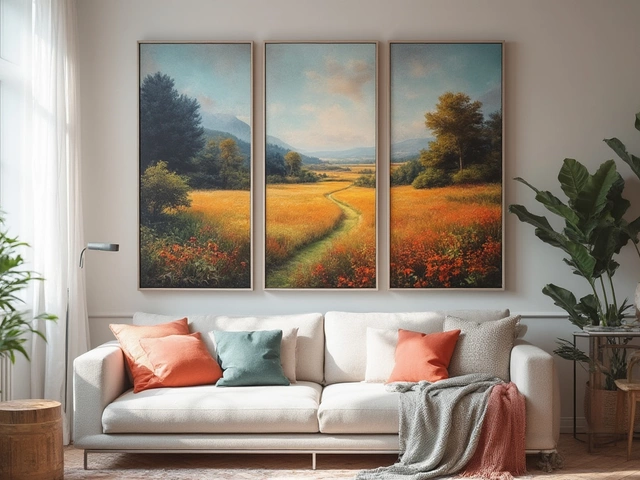Ever wondered if your curtains should match your sofa? It's a classic decor dilemma that many of us face when sprucing up our living rooms. Let's break it down. Imagine this: you walk into a room and see a perfectly matched color palette. The harmony is soothing, right? But what if you step into another room where bold contrasts create an exciting burst of energy?
Both have their charm, and neither one is wrong. It’s all about what vibe you’re going for in your home. Some people love the tranquility of matching shades, while others thrive on the dynamic energy of contrasting colors.
Now, where to start? First, think about your color scheme. Do you want your space to feel calm or energetic? Matching curtains and sofas can create a unified look that feels balanced and complete. On the other hand, pairing a boldly colored sofa with neutral curtains—or vice versa—can add depth and intrigue to your space.
Remember, choosing fabrics with the right texture matters too. Sometimes, a subtle play with textures can bring the visual interest you need, even if the colors are similar. And don’t shy away from patterns or prints—they can make a statement whether they match or contrast.
- Understanding Color Schemes
- Matching vs. Contrasting
- Texture and Fabric Choices
- Patterns and Prints
- Practical Considerations
Understanding Color Schemes
So, let's kick things off with color schemes—an essential part of home decor that can make or break the vibe of a room. Picking the right colors isn't just about what looks good; it's about how colors make you feel, too. Remember how we talked about matching your curtains with your sofa? This is where understanding color schemes comes in handy.
Basics of Color Schemes
There are a few fundamental color schemes you might want to consider:
- Monochromatic: This scheme uses varying shades of a single color. It's perfect if you’re into simplicity and harmony. Think light blue walls with darker blue accents.
- Analogous: These are colors next to each other on the color wheel. They're easy on the eyes, like blue and green. Using these can keep your room feeling serene and connected.
- Complementary: Here, you’re mixing colors from opposite sides of the color wheel, like blue and orange. It’s bold and energetic, ideal if you want your space to pop.
Matching Colors
If you want to match your curtains and sofa, a monochromatic or analogous scheme works well. You can stick to different shades of beige or go for a combination of soft pastels.
Quick Tip
If you're unsure about going matchy-matchy, use a color wheel app or tool! They help in visualizing how different shades play together before committing.
Playing with Contrast
Want something more daring? Go for a complementary palette! This could mean pairing a royal blue sofa with burnt orange curtains. It makes a bold statement and draws attention.
Final Thoughts
There's no right or wrong answer when it comes to curtains and sofa colors, only what feels right to you. Whether you’re creating a calm oasis or a lively hangout spot, understanding color schemes lets you transform your home to match your vibe.
Matching vs. Contrasting
Choosing between matching or contrasting curtains and a sofa is like deciding between calm and chaos. Both can look fantastic depending on your taste and the look you're going for. Let’s dig into what each option offers.
Matching: The No-Fail Formula
Going matchy-matchy is often seen as the safe bet. It creates a harmonious look that feels cohesive and neatly put-together. Imagine a living room where dark blue curtains frame a dark blue sofa. It screams elegance and a well thought-through design.
Keep in mind, matching doesn't mean you need the exact same shade. Playing with tonal variations can add depth. If your sofa is a rich navy, consider curtains in a complementary ocean or sky blue. This approach keeps the look united without being monotonous.
Contrasting: A Punch of Personality
If you’re someone who likes to make a statement, contrasting your sofa and curtains might just be what you're looking for. A bright yellow sofa paired with gray curtains can create a stunning focal point in a room, catching every guest's attention.
Contrast doesn’t have to mean wild and mismatched. Focus on balancing bold shades with neutral tones for a look that's exciting but not overwhelming. For instance, combine a muted green sofa with white or cream curtains to let each element shine.
- Even when contrasting, consider repeating colors elsewhere in the room. Scatter some yellow cushions or artwork to tie things together.
- Textures play a role too. Mix a velvet sofa with lightweight linen curtains for both contrast and tactility.
Whichever way you swing, remember there are no hard rules. It's about expressing your personal style. Looking for inspiration? Check out some before-and-after room transformations online to see how contrasting curtains and sofas can breathe life into a space.
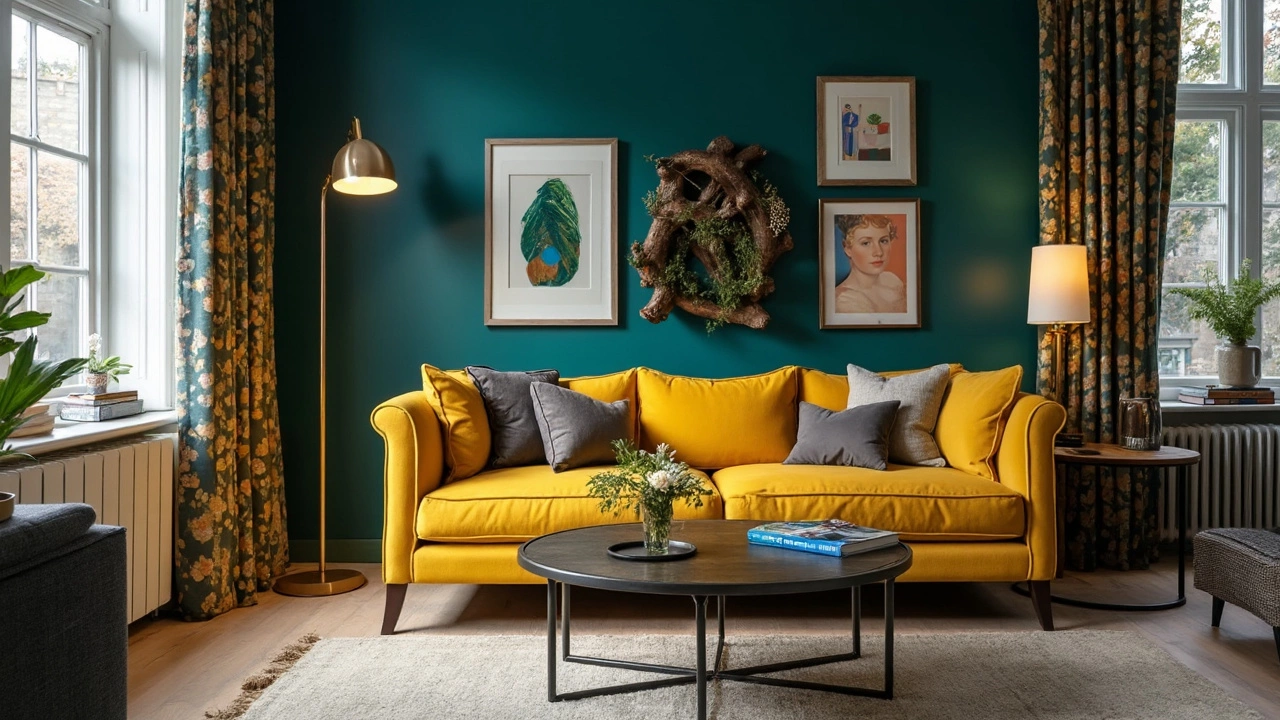
Texture and Fabric Choices
Choosing the right curtains and sofa goes beyond just colors. Texture and fabric are where you can really make your living room pop—or not. Picture this: an elegant velvet sofa paired with luscious drapes. The texture alone screams luxury. On the flip side, a cotton sofa matched with linen curtains gives off those relaxed, laid-back vibes.
A top tip? Coordinate textures if you’re keen on matching. It adds an extra layer of depth that's sometimes missing when we focus only on colors.
Going Bold with Bold Textures
If you've gone for a chic leather sofa, consider balancing it with rich, woven drapes. It's about finding that contrast in texture that complements without overshadowing.
The Cozy Effect
For those aiming to create a snug space, going with soft fabrics like chenille or corduroy for both sofa and curtains can maximize warmth and comfort. People often overlook how texture can entirely change the room's vibe.
"The right texture adds depth to a room, converting bland into brilliant," says Emily Henderson, an interior design expert known for practical yet stylish space transformations.
Mix, Don't Match
- If your sofa is upholstered in a heavy fabric, perhaps go light with curtains that are sheer or airy.
- Mixing high-gloss materials with matte finishes can create visual intrigue.
Lastly, consider maintenance. Fabrics like silk or velvet are stunning but can be high-maintenance. If you're all about easy living, stick to polyester or blends that offer durability without the fuss.
| Fabric | Durability | Care Level |
|---|---|---|
| Velvet | Moderate | High |
| Cotton | High | Low |
| Linen | Low | Moderate |
So, when you think about textures and fabrics, remember: it's not just about what looks good. It’s about creating a space that feels just right for you.
Patterns and Prints
Thinking of integrating patterns and prints into your decor? It’s a fun way to add life to your living space, but it can seem a bit daunting at first. Fear not, because mixing and matching these elements can actually be a breeze. The first step is to think about the types of patterns you’re naturally drawn to—florals, geometrics, stripes, or maybe even something more abstract.
When pairing curtains and sofas with patterns, consider the scale of the prints. For instance, if your sofa has a large floral pattern, you might want to go for smaller, more subtle prints on your curtains to balance things out. Or, you could choose a complementary plain fabric for an elegant look that's not overbearing.
Mixing With Neutrals
If you're mixing busy patterns, using neutrals as a base can create a calming effect. For example, a grey backdrop can make bold patterns pop without being overwhelming.
Combining Different Patterns
Want to mix patterns successfully? Choose one dominant pattern and support it with a secondary, less prominent one. This could mean pairing a polka-dot curtain with a striped sofa or vice versa. Just ensure the colors of your curtains and sofa complement each other, possibly sharing one or two common hues.
Pattern Pairing Tips
- Stick to a limited color palette to create harmony.
- Vary pattern sizes to avoid visual chaos.
- Align patterns by matching lines and shapes when possible.
And here’s an interesting tidbit: a study by the University of Texas found that people often experience increased creativity in environments with vibrant patterns. So if you're feeling a bit adventurous, don't hesitate to reflect that in your living space.

Practical Considerations
Alright, let's get down to brass tacks. When it comes to deciding whether your curtains should match your sofa, there are a few practical things to think about.
Budgeting Your Decor Projects
First off, consider the cost. Perfectly harmonized curtain and sofa pieces might require custom orders, which can be a little pricey. If you’re on a budget, opting for contrasting but complementary colors available in ready-made designs can save you a lot.
Light and Room Dynamics
Think about your room's lighting, too. Natural light can play tricks with colors. A bright orange sofa might look stunning in a sunlit room, but the same shade could feel overwhelming with heavy drapes that match during darker evening hours. Sometimes, lighter curtains can counterbalance a darker sofa effectively.
Maintenance and Durability
How about cleaning and maintenance? If you’ve got kids running around or pets that love to lounge, you want fabrics that can handle some wear and tear. Matching light-colored curtains and sofas might not be practical if they’re prone to stains.
Room Size and Proportion
Size matters. In a small room, matching curtains and sofas can help create an illusion of more space by blending boundaries. In larger spaces, you might go for some visual breaks to avoid feeling too open or chaotic.
Use of Statistics:
Studies show that colors can affect mood and perception. According to a 2023 survey by Home Decor Affiliates, 65% of responders said they felt more relaxed in rooms with coordinated colors, while 50% enjoyed the energy of contrasting hues.
At the end of the day, it’s about balancing these practical considerations with your personal style and lifestyle needs. Don’t stress too much; decorating should be fun, and it’s perfectly okay to change things up as your tastes evolve.
